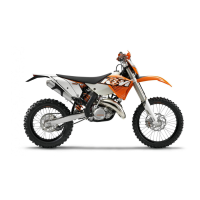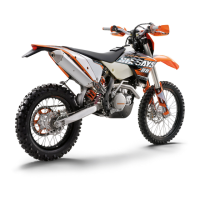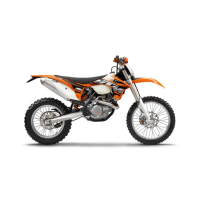What to do if my KTM 300 EXC Six days eu engine cannot be cranked with the electric starter?
- BBradley WolfeSep 12, 2025
If your KTM Motorcycle engine won't crank with the electric starter, several factors could be at play. It might be due to an operating error during the start procedure. Another cause could be a discharged battery, so you should recharge it and check the charging voltage, closed current, and alternator. Also, inspect the main fuse and replace it if it's blown. The starter relay or the starter motor itself could be faulty, requiring a check.





